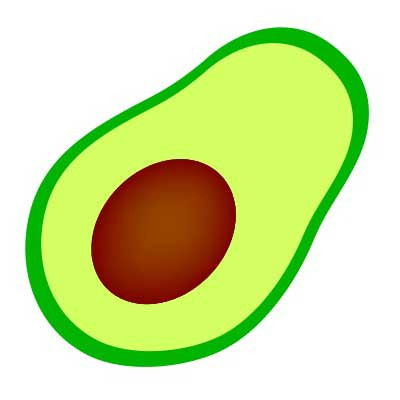vue 入门总结
这篇文章旨在给要学习vue的新手一个大概的认知轮廓,让你心里有个学习的结构,有的放矢,避免在前期浪费太多时间。
vue单文件组件简介
首先,vue是什么,为什么用vue自然不用说,下面直接来个例子,大概扫一下,往下看
<template>
<div class="_full_inner _scroll _effect component-chat" :class="{'_effect--30':decline}">
<search-bar></search-bar>
<ul class="wechat-list">
<li class="item _line-fine" v-for="item in wechat_list" transition="chat-item">
<div class="info" :class="{
'current':currentIndex==$index
}" @touchstart="info_touchstart($index)" v-touch:tap="info_tap($index)" v-touch:swipeleft="info_swipeleft($index)" v-touch-options:swipe="{ direction: 'horizontal' }">
<div class="ico-box">
<i :class="item.chatConfigModel | f_news 'nclass'" v-text="item.chatBaseModel | f_news 'ntext'" v-show="item.chatBaseModel | f_news 'nshow'"></i>
<div class="ico">

</div>
</div>
<div class="desc">
<div class="desc-time" v-text="item.chatBaseModel.endTimeStr | fmtDate 'hh:ss'"></div>
<div class="desc-title" v-text="item.base.name"></div>
<div class="desc-message">
<div class="desc-mute iconfont icon-mute" :title="item.chatConfigModel.newsMute | json" v-show="item.chatConfigModel.newsMute"></div>
<span :title="item.base.type" v-show="item.base.type==='friends'" v-text="item.chatBaseModel.endChatAuth+':'"></span>
<span v-text="item.chatBaseModel.endChatTxt"></span>
</div>
</div>
</div>
<div class="handle">
<div class="handle-unread" v-touch:tap='increase_newsState($index,1)' v-show="item.chatBaseModel.newsUnreadCount==0">标为未读</div>
<div class="handle-unread" v-touch:tap='increase_newsState($index,0)' v-show="item.chatBaseModel.newsUnreadCount>0">标为已读</div>
<div class="handle-del" v-touch:tap="delete_item($index)">删除</div>
</div>
</li>
</ul>
</div>
<!-- router -->
<router-view transition="cover" keep-alive></router-view>
</template>
<script>
import {
wechat_list
} from 'getters'
import {
get_menu_wechat_list,
set_menu_active,
set_chat,
set_chat_count,
set_news_state,
delete_news
} from '../vuex/actions'
import searchBar from 'components/search-bar.vue'
export default {
vuex: {
getters: {
wechat_list
},
actions: {
get_menu_wechat_list,
set_menu_active,
set_chat,
set_chat_count,
set_news_state,
delete_news
}
},
route: {
activate({
from,
to,
next
}) {
this.set_menu_active(0)
next()
}
},
data() {
return {
decline: false,
currentIndex: -1, //列表item处在左划状态
isTouchSwipe: false, //验证是否处于左划状态
}
},
events: {
'route-pipe' (_decline) {
this.decline = _decline
this.$parent.$emit('route-pipe', _decline)
}
},
methods: {
info_touchstart(_index) {
this.currentIndex = -1
},
info_tap(_index) {
var index = _index;
if (index >= 0 && !this.isTouchSwipe) {
this.set_chat(this.wechat_list[index])
this.$router.go({
path: "/chat/dialogue"
})
}
this.isTouchSwipe = false
},
info_swipeleft(_index) {
event.stopPropagation()
if (!this.isTouchSwipe) {
this.isTouchSwipe = true
this.currentIndex = _index
} else {
this.isTouchSwipe = false
}
},
computed_unRead_count() {
//计算未读数量
let sum = 0;
console.log(this.wechat_list)
this.wechat_list.forEach(({
chatBaseModel,
chatConfigModel
}, index) => {
if (!chatConfigModel.newsMute) {
let count = chatBaseModel.newsUnreadCount
sum += count
}
})
this.set_chat_count(sum)
},
increase_newsState(index, val) {
this.isTouchSwipe = false;
//改变已读未读状态并回调计算未读总和
this.set_news_state(index, val, () => {
this.currentIndex = -1
this.computed_unRead_count()
})
},
delete_item(index) {
this.delete_news(index, () => {
this.currentIndex = -1;
this.computed_unRead_count()
})
}
},
filters: {
f_news(obj, attr) {
var obj = obj || {}
let newsClass = obj.newsMute ? '_news-dot' : '_news-count'
let newsText = !obj.newsMute ? obj.newsUnreadCount : ''
let newsShow = (obj.newsUnreadCount > 0)
let o = {
nclass: newsClass,
ntext: newsText,
nshow: newsShow
}
return o[attr]
}
},
components: {
searchBar
},
created() {
this.get_menu_wechat_list(() => {
this.computed_unRead_count()
})
}
}
</script>
<style scoped>
</style>你可能有点懵逼,其实就三个块儿
<template>
....
</template>
<script>
....
</script>
<style>
....
</style>那么这个东西是JB玩意儿呢?这个是一个vue的组件,是单文件组件,vue有两个核心的思想,双向绑定和组件开发,双向绑定说的是页面数据和内存数据相互影响,一个改变,另外一个也会随着改变,这个慢慢理解。最直观的其实是组件开发的思想,上面这个文件就是一个组件,template里是html布局,script是这个页面需要的数据,方法,style是样式,一个vue项目都是由这样的文件组成的,这样的好处可能你也看出来了,两个,一个是复用性强,另一个是就近维护,摆脱修改一个东西,要模板,样式,js文件到处找。这是单文件组件的介绍。
语法
上面你只是有了一个大概的了解,下面我们看看语法,还是看上面的例子,看这一段儿
import {
wechat_list
} from 'getters'
import {
get_menu_wechat_list,
set_menu_active,
set_chat,
set_chat_count,
set_news_state,
delete_news
} from '../vuex/actions'
import searchBar from 'components/search-bar.vue'
export default {没错,这是es6的语法,vue中这样引入模块,输出模块数据的语法随处可见,所以你应该去看看es6关于module这一块儿的语法 阮一峰es6教程,接着看下面这段儿
data() {
return {
decline: false,
currentIndex: -1, //列表item处在左划状态
isTouchSwipe: false, //验证是否处于左划状态
}
},这一段返回了一个对象,里面有一些键值对,这些就是页面中需要的数据。
methods: {
info_touchstart(_index) {
this.currentIndex = -1
},
info_tap(_index) {
var index = _index;
if (index >= 0 && !this.isTouchSwipe) {
this.set_chat(this.wechat_list[index])
this.$router.go({
path: "/chat/dialogue"
})
}
this.isTouchSwipe = false
},这一段儿定义了很多method,这些方法就是页面的数据交互和动作
components: {
searchBar
},这是一个组件,是这个组件引入的另一个组件,vue就是因为这样的用法才显得很nice,你会发现上面的html中有这样的语句
<search-bar></search-bar>js中还有这样的语句
import searchBar from 'components/search-bar.vue'至于为什么这么写先不要考虑,先看下面这一段
created() {
this.get_menu_wechat_list(() => {
this.computed_unRead_count()
})
}这是个啥呢,每个vue实例都有一个生命周期,从创建到销毁这个过程,vue都给出了对应的回调函数,你只要可以指定在某个阶段,要怎样。再看一段儿
vuex: {
getters: {
wechat_list
},
actions: {
get_menu_wechat_list,
set_menu_active,
set_chat,
set_chat_count,
set_news_state,
delete_news
}
},这个又是啥呢?由于vue异常受欢迎,所以围绕着vue出现了很多插件,这个vuex就是其中一个,还有专门做路由的vue_router,还有专门做请求的vue-resource(现在官网推荐vue_axios)。
小结:vue语法涉及的内容还是挺多的,那么怎么学呢?首先你得把官方文档先看了,官方文档写的相当的详细,你最好把那些小例子都做了。比如基本语法有哪些,啥事双向绑定,啥是计算属性,啥是生命周期,组件有几种语法,单文件组件的语法,看了官网,这些东西你差不多就懂了一些,接着,看一下视频,最好是讲脚手架工具运用的,这样,有了基础语法,你自己下个空的脚手架,试一试,就更有感觉了。下面说一说vue脚手架工具
vue_cli
官网刚开始就有句话,说刚开始学的时候不要去用脚手架,建议你先引入一个cdn文件,直接开始看语法,这是对的,因为直接看脚手架,上面全是单文件组件的语法,可能很难接受,所以先引入文件把官网的例子走一走,知识点过一遍是最好的。
啥是脚手架工具呢?就像刚才说的,你直接引入一个vue.js可以写一些简单的语法例子,但是vue的核心就是组件化,而单文件组件全是.vue的文件,浏览器并不认识,就需要webpack来编译,所以vue提供了一个框架,集成了webpack,你可以按照官网下载一个,对于熟悉nginx的你,刚开始接触基于node的vue,你可能会遇到一些坑,看看这篇文章,可能会给你省下很多时间一些坑和补充。关于vue的脚手架工具,你应该尽量去理解他的文件结构,比如哪个是入口文件,组件怎么引入,怎么实例化,组件里面怎么引组件,这些都需要一点一点看。这些建议看视频,会比较快。如果上面说的你都知道了,这个时候,你差不多就是一个合格的vue小菜鸡了。
补充:vue脚手架是前后端分离的架构,那么如果在laravel中怎样使用vue的组件化功能呢?可以看一下我的另外一篇文章[laravel与vue]()(我还没写呢,写的有点累了,后面补上。)
本作品采用《CC 协议》,转载必须注明作者和本文链接






 关于 LearnKu
关于 LearnKu




推荐文章: